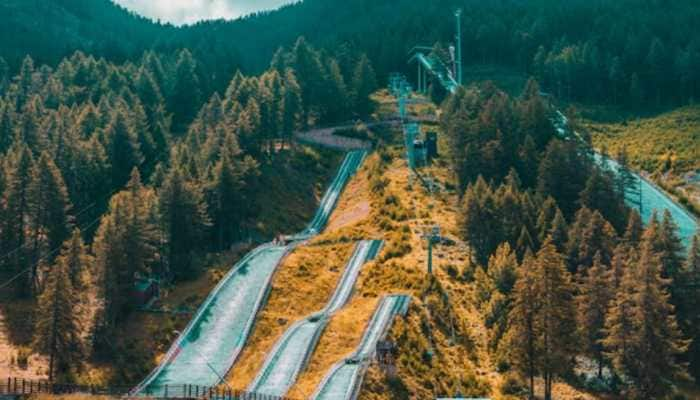Asteroid 2020ND, bigger than London Eye to fly past Earth on July 24 --All you want to know about the 'potentially hazardous asteroid'
Five other asteroids will fly by towards the end of July 2020.
- The Asteroid measures 130 m-280 m in diameter.
- It will be travelling at a speed of 13.5 kilometres per second or 48,000 kilometres per hour
- The asteroid will come within just 0.034 astronomical units (AU) of the earth on July 24.
Trending Photos
)
New Delhi: Asteroid 2020ND, that Space Agency NASA has described as 'potentially hazardous asteroid' will fly past the Earth on July 24.
Measuring 130 m-280 m in diameter, the Asteroid 2020ND is bigger than London Eye. Travelling at a speed of 13.5 kilometres per second or 48,000 kilometres per hour, the asteroid will come within just 0.034 astronomical units (AU) of the earth on July 24.
NASA says, "Potentially Hazardous Asteroids (PHAs) are currently defined based on parameters that measure the asteroid’s potential to make threatening close approaches to the Earth. Specifically, all asteroids with a minimum orbit intersection distance (MOID) of 0.05 au or less and an absolute magnitude (H) of 22.0 or less are considered PHAs."
Five other asteroids will fly by towards the end of July 2020--these include the 2002 BF25 on July 21, the 2020 ND on July 24, 2020 MX3 on July 29 as well as the 2018 PY7 and the 2007 RF1 on July 31.
The space agency can study the near Earth object (NEO), due to its close distance/proximity. Near-Earth objects (NEOs) are asteroids and comets that orbit the Sun, but their orbits bring them into Earth's neighbourhood - within 30 million miles of Earth's orbit.
Asteroids are small, rocky objects that orbit the sun. They are left over from the formation of our solar system. Although they orbit the sun like planets, but they are much smaller than planets. Most of the Asteroids live in the main asteroid belt—a region between the orbits of Mars and Jupiter. About 4.6 billion years ago our solar system began when a big cloud of gas and dust collapsed. During this, most of the material fell to the center of the cloud and formed the sun. Some of the condensing dust in the cloud became planets. The objects in the asteroid belt never had the chance to be incorporated into planets. They are leftovers from that time long ago when planets formed.
Stay informed on all the latest news, real-time breaking news updates, and follow all the important headlines in india news and world News on Zee News.
Live Tv







)
)
)
)
)
)
)
)
)
)
